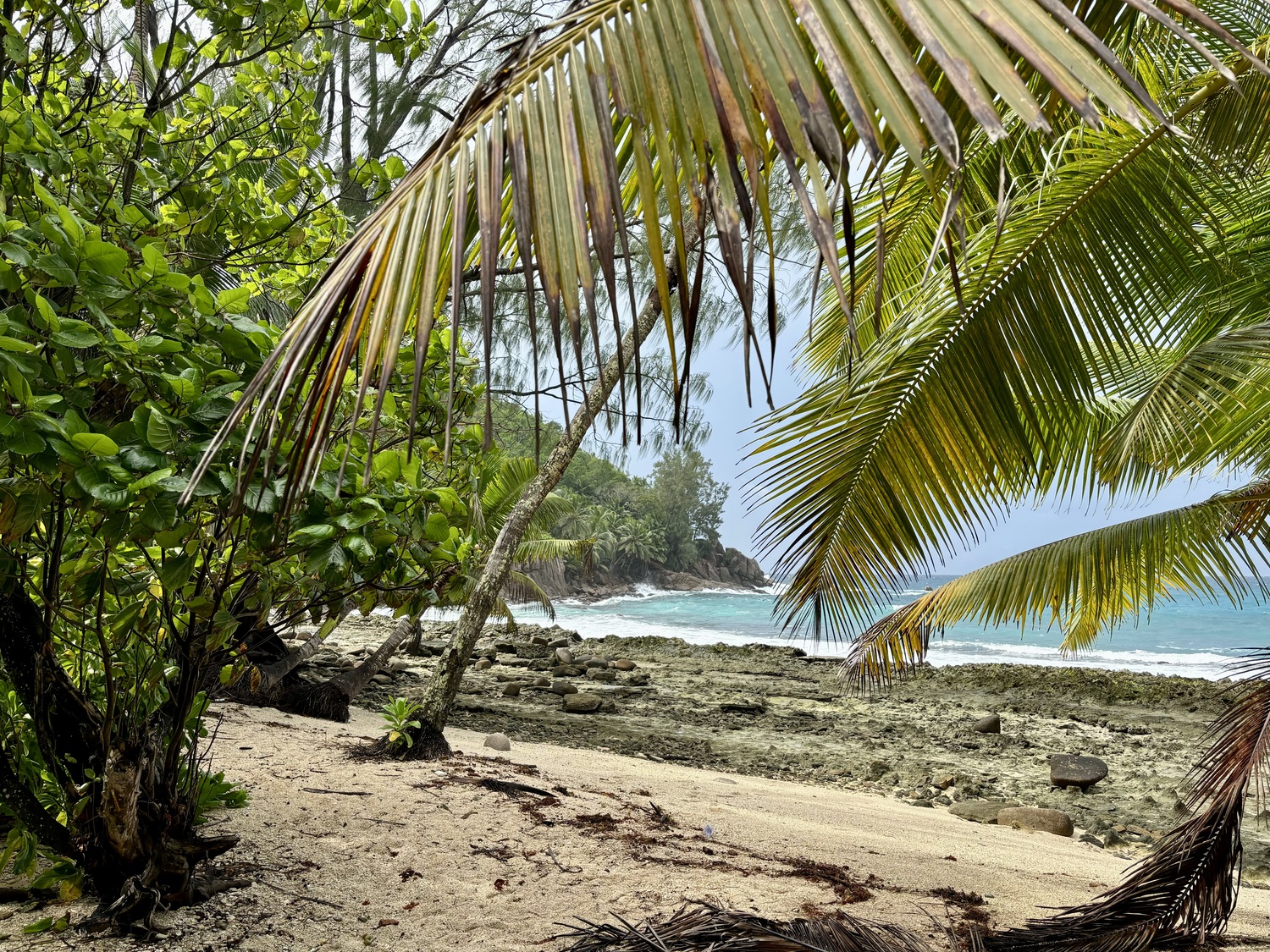
January in the Seychelles — a 115-island nation off the coast of mainland Africa — is the rainy season, so I was not surprised to see a slate-gray sky as I flew into Mahé from Doha. The country’s largest island is also, in some ways, its most visually representative.
When you see photographs of the Seychelles, which is often pitched to travelers as either a far-flung honeymoon destination or, alternately, an idyllic stopover on the way back from an African safari, you’re likely to see towering granitic islands that sprout up from white sand beaches. Mahé is, indeed, like this, but not all islands are (take, for instance, Platte Island, where the Waldorf Astoria has only recently opened a 50-room-and-villa property).
In a way, a stay on Mahé is like a trip backward in time. Jurassic-looking vegetation creeps up massive stone outcroppings, giant tortoises wander around dedicated enclosures (they’re native to the Seychelles, in small numbers), and beaches are flanked by boulders that look like they landed from outer space.
I arrived in the morning, after a nearly 30-hour journey (Boston to Doha; nine-hour layover in one of the world’s finest airports; Doha to the Seychelles), but my next destination, Mango House Seychelles, LXR Hotels & Resorts, was only a half-hour drive from the petite airport. Built in the 1960s by the Milan-born photographer Gian Paolo Barbieri, Mango House sits on a slip of white sand beach on the southwest part of the island. It’s built around a 150-year-old mango tree and offers guests 41 suites; my own 1,141-square-foot one-bedroom accommodation, the One Bay House Suite with Plunge Pool, included, yes, an ample private pool, a living area, dining table, powder room, and primary bedroom with a sweeping water view.
During my stay, I was assigned my own Seychellois butler, Jemmy Bibi, who helped me to navigate the island and its intricacies. “We are a blessed island,” he told me one day. He was speaking, specifically, about the country’s good fortune when it comes to natural disasters. Did they have a hurricane season, I wanted to know? No, he said. Cyclone? Not those, either. Among all the afflictions that plague islands, Jemmy could remember just one, the tragic tsunami that killed over 200,000 people in 2004. “I was the first to see it,” he said, meaning the first of his family. He watched the water drain out of the sea, but the outer islands buffered Mahé against any major impact.
For an island nation as far-flung as it gets, I had also been surprised to find a robust and sustainable food scene on the largest island of Mahé, one that pulses with life. It caught me off-guard — largely Creole with inflections of global cuisine, locally sourced, aware of its own limitations. At Azido, a Japanese restaurant within Mango House, a flight of nigiri and sashimi I enjoyed on my first evening in paradise was made from locally caught fish: planks of yellowfin tuna; squid over rice with a whisper of wasabi; homemade shrimp gyoza with ponzu.
It was soursop season, and I saw the green, spiky fruit on display one morning at the bustling Sir Selwyn-Clarke Market in Victoria, the country’s capital; Jemmy helped me suss out the best produce and showed me which vendors had the freshest fish. Later, we stopped for lunch at the Jardin du Roi, the restaurant attached to the spice garden, a botanical space where guests can marvel at native trees, and where I enjoyed prawns cooked in garlic and coconut and a crepe stuffed with local bananas.
The Seychelles, I found, hid culinary surprises around every corner. At Cap Lazare, a nature preserve where I went to see those aforementioned giant tortoises roam in a 10-acre natural habitat, I found a working farm (the property supplies fruits and vegetables to the Four Seasons, Kempinski, and Hilton properties, among others), as well as a bespoke restaurant. For lunch: a sprawling meal of fish, pork sausage, and chicken curry arrived, along with fried eggplant, papaya chutney, fish paté, fresh fruit salad, and coconut nougats.
Did I sit on the beach? Well, maybe not sit so much as drop in for a snorkel. I jumped in at Anse Royale Beach and snorkeled to a nearby reef, where I immediately saw a spotted eagle ray, one of my favorite underwater creatures. Jemmy also assisted in planning a day trip to the nearby island of Silhouette. There, we got out on the water with help from the staff at Hilton Seychelles Labriz Resort & Spa and had the inimitable experience of seeing, from the shoreline, something I had never before seen: two sea turtles, waddling down into the sand, to find nesting spots to lay their eggs.
A few hours before I departed for the airport, prepared to make the long journey home, I took a cooking class in the outdoor kitchen at Mango House, where I blended together spices for a shrimp curry of my own. Back home, the best I could do was toast up mostly expired spices in a pan to boost their fragrance, but in the Seychelles, I was working with cinnamon that had recently been peeled from a tree, turmeric as bright as the sun, coconut milk from the smallest and most tender fruit I had ever seen in my life. The result was a curry so rich and lively I couldn’t believe it was real, except of course it was: I had made it with my own hands. (The recipe, of course, hailed from Chef Nadine Moncherri.)
All this had been the richest surprise, the deepest discovery, that in coming all this way I had learned of the new and delicious adventures that I had not known even existed. To eat and bask in paradise? A dream realized.